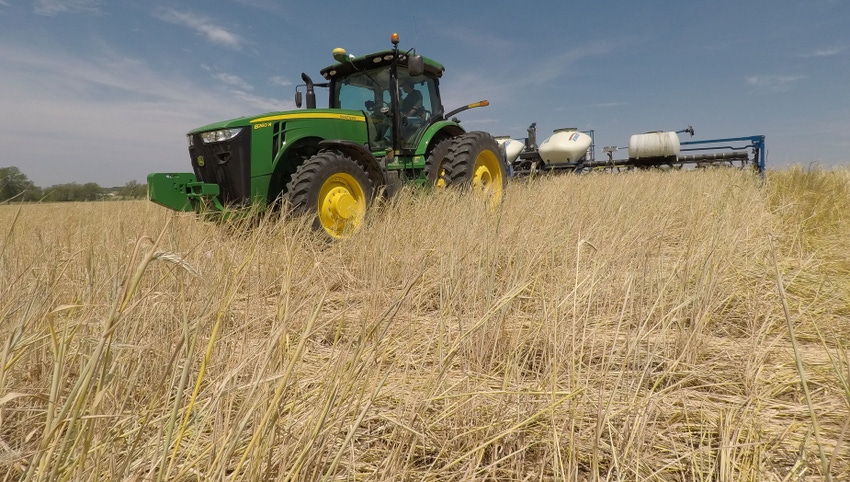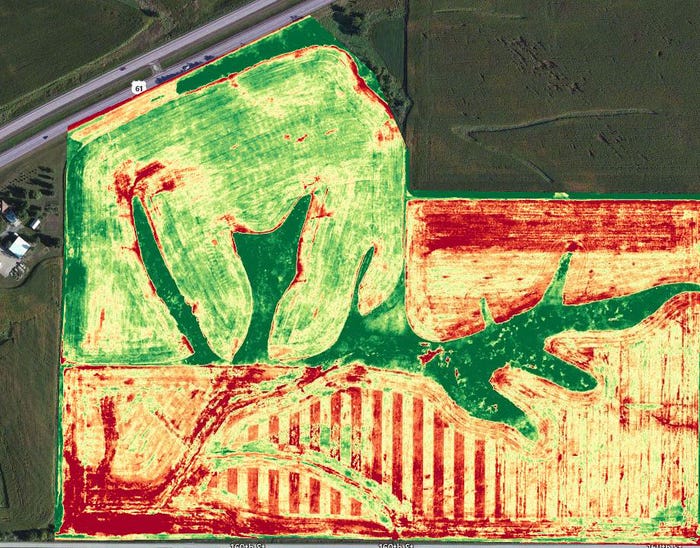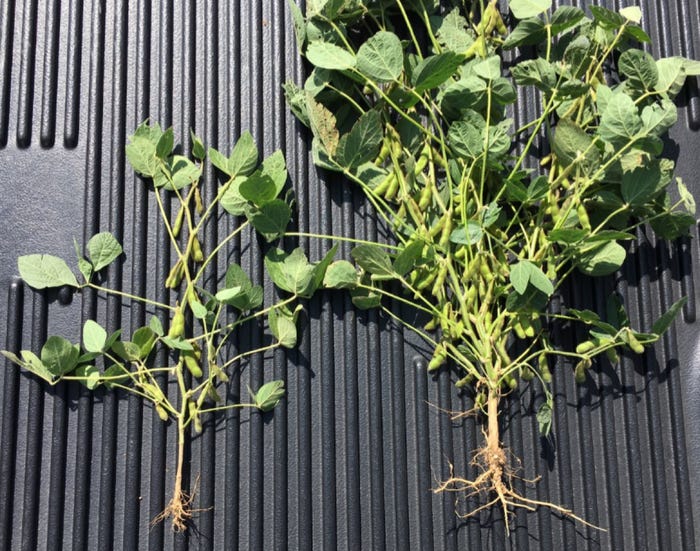September 25, 2017

By Allie Arp, ISA research communications specialist
If a crop doesn’t start right, it’s not going to end right. This seemed to be the case for some farmers who planted soybeans into cover crops last spring. Why do planter settings matter on the eve of harvest? Because if you were a farmer who experienced issues with soybean stands in a cover crop last year, the Iowa Soybean Association (ISA) On-Farm Network doesn’t want you to be discouraged from trying the practice again.
“In On-Farm Network research, we have seen few instances where cover crops reduced yield,” said Scott Nelson, On-Farm Network director. “Generally, the trend is neutral to positive yield responses to cover crops. However, in some areas of the state, soybeans planted into cover crops had a reduced stand this year.”
Like most farming problems, the reasoning behind the lower soybean stands this year in some fields is complex. One potential solution has been brought forward from TruAcre Technology. By working with ISA Director and Davenport-area farmer Robb Ewoldt, TruAcre compared the effects of planter settings on soybean stand establishment in cover crops. They used TruAcre’s test planter, a 16-row Kinze 2600 equipped with hydraulic downforce pressure on half of the planter, while the other half used standard springs to achieve downforce.
The magnitude of the response was startling.
Strips planted with the hydraulic downforce pressure were nearly twice the size of strips planted with standard springs (Figures 1 and 2). In this environment, achieving a more consistent planting depth assured even emergence and root development to combat the drought and heat encountered by farmers this summer.

“We definitely saw a difference planting into cover crops,” said Ewoldt. “The biggest thing we’re learning is the importance of getting consistent seed depth with soybeans into cover crop. It can be done, but we need a planter that will make it work.”

These results are the first of their kind, indicating planter settings can make a difference in soybean production. The On-Farm Network is looking to repeat and expand this type of testing in 2018. Interested farmers are encouraged to email [email protected].
“It’s not scaring me away from cover crops,” Ewoldt said. “We’ve done this for five years and this is the first time we’ve had an issue. We’ve seen excellent results, especially in drought years.”
For more information about research conducted by the ISA On-Farm Network, visit iasoybeans.com. To learn more about TruAcre Technology, visit truacre.com.
Trial details
Interested in how this particular trial was conducted? Read below for more details.
Ewoldt used a 16-row planter that had been fitted with half hydraulic downforce with electric drives and half chain-drive metering with only spring for downforce. Both sides had clean sweeps, copperhead closing wheels and a vacuum. The modified planter was used on approximately 900 acres of corn and 200 acres of beans. Some of the ground was tilled, some was no-till, some was no-till with cover crops.
“It was a good representation of what we deal with in Eastern Iowa,” Ewoldt said. “I personally played around with a lot of different settings just to see what would happen.”
One particular setting led to a major difference. Ewoldt was “very aggressive” with the clean sweeps on a few rows and it lifted the spring downforce units up out of the field. The results were soybeans planted an inch shallower. The residue clearing did not compensate for the loss of depth. The germination of those soybeans was delayed by a week and a half.
“I’ve been driving by that field every day to do hog chores and it reminds me that planter setting is very important,” Ewoldt said. “You can learn something from every experience — whether it’s good or bad. The biggest thing we’re learning is getting seed depth with soybeans into a cover crop is critical.”
You May Also Like




